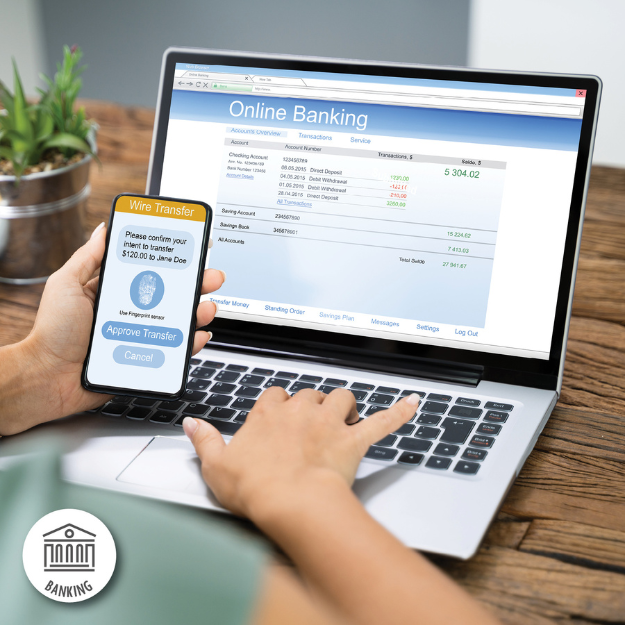What’s the Difference Between ACH and Wire Transfers?
In 2024, there’s no shortage of ways to electronically transfer funds between accounts. Let’s take a look at two popular methods: automated clearing house (ACH) and wire transfers.
What is ACH?
ACH utilizes a clearing house to transfer funds between accounts. ACH transfers can take several days to complete.
ACH transfers include:
- Direct deposit for paychecks
- Direct deposit for government benefits
- Automated and one-time bill payments
- International payments
- P2P payments
- B2B payments
What is a wire transfer?
A wire transfer moves funds from one account to another. Wire transfers can be domestic or international and can generally be sent through a bank or credit union. They can also be sent using a wire transfer service, like Western Union or MoneyGram. The individual sending the transfer will have to pay a fee. Once a transfer has been accepted by the receiver, it cannot be reversed.
Wire transfers are commonly used for these transactions:
- Down payments
- Federal tax payments
- Car purchases
What’s the difference between ACH and wire transfers?
There are several important distinctions between ACH and wire transfers:
1) Speed and timing
ACH transfers are usually scheduled for deposit between one to three business days after the request is sent. Same-day processing is available for a fee, and daily deadlines are generally later in the day or evening.
Wire transfers are typically processed the day they arrive, often in just a few hours. The transfer will need to be initiated before the insitutions’s or service’s established deadline, which is typically 3 p.m., to benefit from same-day processing. Also, international transfers will take longer to clear, up to 10 days.
2) Cost and fees
ACH transfers made from your own bank or credit union will usually come at no cost. Sometimes, a nominal fee will be charged. However, if you attempt to make an ACH transfer from an account having insufficient funds, you may be charged an overdraft fee of up to $35 for each attempt made.
Wire transfers, on the other hand, have high fees attached to them. Domestic wire transfers typically cost between $25-$30, international wire transfers can cost up to $50, and internal wire transfers (being on the receiving end of a wire transfer) can cost you $15.
3) Limits
ACH transfers are typically limited by day, month, account and/or method of transfer. You may not be able to send more than a few thousand dollars via ACH each month.
Wire transfers have much higher limits, and you can usually send hundreds of thousands of dollars through a transfer. You may be able to send an unlimited amount by visiting your bank or credit union, or by seeking their assistance over the phone.
4) Security
ACH transfers can be hijacked by scammers to divert the funds to their own accounts. Be sure to track any ACH transfers you make and request a reversal of funds if you notice any suspicious activity.
On the other side of the table, wire transfers are notoriously favored by scammers for their irreversibility and lack of traceable evidence. Once a wire transfer has been accepted, there’s usually no way to reclaim the lost funds. It’s also difficult to identify the recipient of the transfer once it has been made.
It’s crucial to verify the identity and account information of a wire transfer recipient before agreeing to send funds. Never wire money to an unverified contact or new retailer.
Use this guide to learn how ACH and wire transfers work so you can make an informed decision about transferring your funds.




















